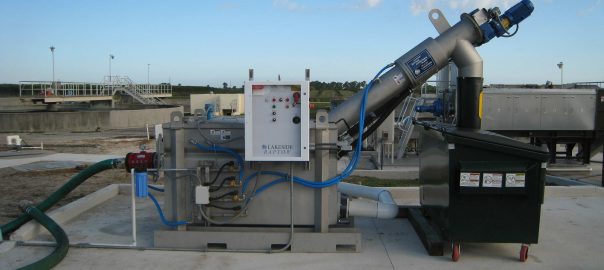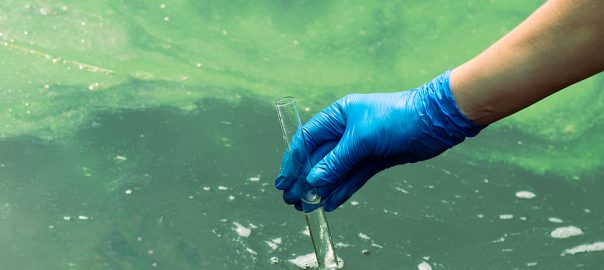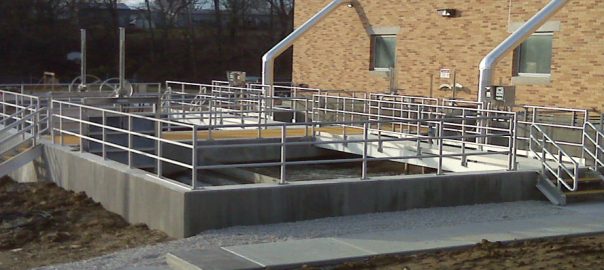
While sewer systems started centuries ago, sewage grinders are newer. They originated in the 1970s to help wastewater treatment plants handle the increase in sewage trucked in from homes and businesses that used septic systems due to the distance to the city sewers. By grinding the sewage pumped from septic tanks, it eliminated some of the clogs that could happen.
Industrial sewage grinders benefit many businesses and wastewater treatment plants. They’re used in apartment buildings, restaurants, food processing plants, and septage acceptance plants. Suppose you own a brewery with an independent water treatment system to ease the burden on the municipal treatment plant. An industrial sewage grinder can help break up any grains, hop flowers, and flavoring additives like cacao nibs or fruit that slip through screening steps.
Why should you take this step? It can keep your repair costs down by preventing problems before they occur. That’s one reason to look into this system. Or, if you’re plagued by blockages caused by organic and inorganic materials, it’s time to look at the benefits of a sewage grinder. How do you choose the right grinder pump for your needs? Start by understanding how a grinder works.
How Does a Sewage Grinder Work?
Have you ever used a garbage disposal system? If so, you’ll have an idea of what an industrial sewage grinder does. It grinds food particles in a residence before the wastewater continues its way to a sewer system. Some homes have garbage disposals on a septic system, but that’s not advised as the food particles can lead to issues in a septic tank and leach field.
While similar, a sewage grinder is designed for intense use. A sewage grinder pump has a plate at the bottom of the pump that grinds up materials before they’re pumped to a sewer head. The goal is to make sure any solids are small enough particles that they will not clog a line.
The sewage grinder sits in a large fiberglass basin. As wastewater comes in, solids sink to the bottom. When the unit turns on, the grinder’s blades spin and grind the items into small pieces that mix with the fluids to become a slurry. The pump pushes the slurry into the pipe and moves it towards the sewer pipes to continue the journey to the wastewater treatment plant.
An industrial sewage grinder is helpful in food processing plants, restaurants, breweries, and wineries. Before the wastewater heads to a sewer system, organics get ground up. Hop flowers, chicken feathers and skin, small bone fragments, and grape skins and stems are some of the items these grinders are equipped to handle.
You may want to look into one for your hotel or apartment complex. Some things that get flushed by residents can pose a serious issue in sewer lines and wastewater treatment plants. With a line to a sewer suddenly clogged, you have residents dealing with backed-up toilets and sinks. Affording the cleaning costs and damages gets expensive.
Flushable wipes and flushable cat litter aren’t as flushable as people might think. While you don’t want your residents flushing these items, you can’t always stop them. Fecal matter is another issue that can cause clogs in the pipes leaving the building’s basement. By installing a grinder pump, you can help the wastewater district avoid damage to equipment and clogs by grinding these items in a slurry before it travels to the sewers.
Choosing the Best Industrial Grinder Pumps for Your Needs
How do you choose an industrial grinder pump? Much of your decision is based on your industry and distance to a sewer line. The farther you are from the sewer, the stronger a pump you need.
#1 – What’s Your Company’s or District’s Goal?
What is the pump used for? Is it a residential complex or a food processing plant? That also makes a difference. A residential complex may not have loads of food scraps going down the drain all day, while an industrial plant may not have items like flushable wipes.
#2 – What is the Top Flow Rate?
One or more grinder pumps are in that basin where the wastewater collects. What happens next depends on the pump’s design. Some are operated manually, but others have floats that activate the pump. When the float reaches the top, the pump turns on, grinds the organic and inorganic materials, and pumps out all of those grounds and wastewater. Faster flow rates may require the pump to turn on more often. It would be best if you sized the pump to match the speed of the flow.
In some settings, you might find the wastewater flows more at certain hours. If this is the case, a pump that is manually operated may suit your needs. If you can’t predict when the pump will need to run, you need one that runs automatically when the float rises or at timed intervals. You need a pump that handles the max flow rate, not the average flow.
#3 – How Much of an Incline Does the Wastewater Experience?
What is your plant’s or building’s design? You need the pressure to get the wastewater up the slope if you’re downhill from the main sewer line. Do you have gravity helping the flow of sewage? You may need less horsepower if you’re downhill from the sewer as you have gravity helping. The grinder pump’s horsepower is essential if you deal with more lift to get the sewage uphill.
#4 – What Are the Local Codes?
Get to know the local codes to ensure your system is in compliance. This is why it’s often better to talk to an expert in sewer design. It saves you from expensive fines down the road.
#5 – Do You Have a Large Budget for Maintenance?
The lifespan of an industrial sewage grinder varies depending on the usage, whether the right grinder was installed, and flow rates. Maintenance helps extend the life, but there comes a time when you have to replace your grinder due to age or extensive maintenance.
What’s your operating budget? Do you have maintenance around regularly for routine maintenance? Do you use contractors? That can also make a difference. Most pumps are designed to be trouble-free, but things like sealed bearings that never need to be greased are worth looking at.
An industrial sewage grinder system is one of the greatest investments certain businesses and wastewater treatment plants can make. It comprises the grinder pump, a basin, the electricals, piping, and valves, making it something best left to a professional to install. You still should look at the goals of a sewage grinder and understand the options to understand better what type of pump is best for your needs.
Lakeside Equipment is happy to help you choose a suitable replacement for your industrial sewage grinder. Our engineers work with you to come up with the right system for your needs and budget. Give us a call to learn more about grinder pumps for your industrial needs.






